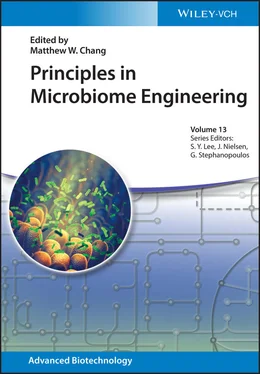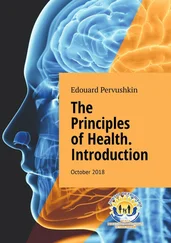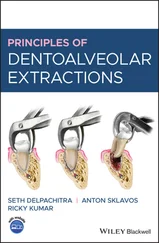Principles in Microbiome Engineering
Здесь есть возможность читать онлайн «Principles in Microbiome Engineering» — ознакомительный отрывок электронной книги совершенно бесплатно, а после прочтения отрывка купить полную версию. В некоторых случаях можно слушать аудио, скачать через торрент в формате fb2 и присутствует краткое содержание. Жанр: unrecognised, на английском языке. Описание произведения, (предисловие) а так же отзывы посетителей доступны на портале библиотеки ЛибКат.
- Название:Principles in Microbiome Engineering
- Автор:
- Жанр:
- Год:неизвестен
- ISBN:нет данных
- Рейтинг книги:5 / 5. Голосов: 1
-
Избранное:Добавить в избранное
- Отзывы:
-
Ваша оценка:
- 100
- 1
- 2
- 3
- 4
- 5
Principles in Microbiome Engineering: краткое содержание, описание и аннотация
Предлагаем к чтению аннотацию, описание, краткое содержание или предисловие (зависит от того, что написал сам автор книги «Principles in Microbiome Engineering»). Если вы не нашли необходимую информацию о книге — напишите в комментариях, мы постараемся отыскать её.
Provides an overview of the techniques and applications insight into the complex composition and interactions of microbiomes Principles in Microbiome Engineering
Principles in Microbiome Engineering
Principles in Microbiome Engineering — читать онлайн ознакомительный отрывок
Ниже представлен текст книги, разбитый по страницам. Система сохранения места последней прочитанной страницы, позволяет с удобством читать онлайн бесплатно книгу «Principles in Microbiome Engineering», без необходимости каждый раз заново искать на чём Вы остановились. Поставьте закладку, и сможете в любой момент перейти на страницу, на которой закончили чтение.
Интервал:
Закладка:
1.3.1 Infection
Infections in the human host occur resulting from microbiome dysbiosis, where there is a change in the interactions between the various members of the microbiota and the human host cells. These changes can be transient and may restore to a state of equilibrium as the host recovers from the ailment or might result in a permanent perturbation that results in an altered microbiome state. The following section will look at the various dietary‐related approaches used to restore balance in the microbiota.
1.3.1.1 Fecal Microbiota Transplantation (FMT)
The concept of fecal microbiota transplantation (FMT) is to import the colonic microbiome from a healthy person, and transferring it to the intestine of a diseased patient to restore the microbiota ( Figure 1.5) [165–167]. FMT is used in the treatment of Clostridium difficile infection (CDI), IBD, insulin resistance, and other diseases [168]. In this section, we will discuss the role of FMT in tackling CDI.
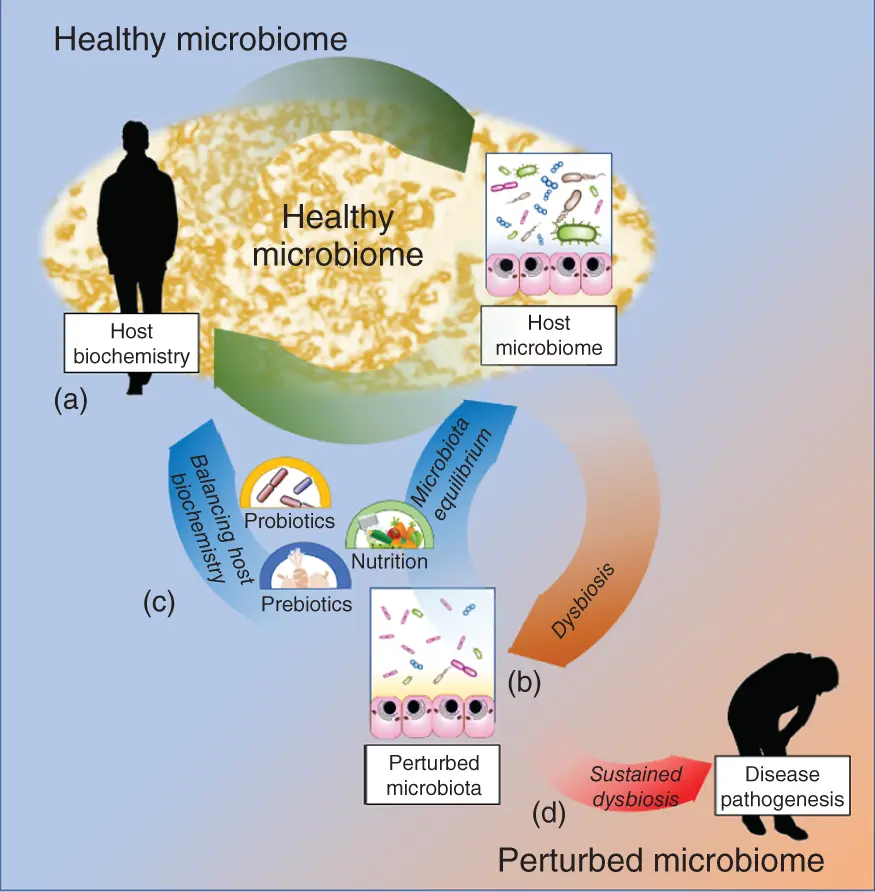
Figure 1.4 Dietary perturbation of the microbiome to improve human health.The healthy microbiome results from an equilibrium of host biochemistry and its microbiota (a). During dysbiosis, the population of certain disease‐causing microbes increases, resulting in pathogenesis (b). Using diet, it is possible to help restore balance in the host biochemistry and establish a balanced microbiota in the host. This can be achieved using prebiotics, probiotics, and nutrition to perturb the host microbiome (c). However, sustained dysbiosis will result in disease pathogenesis, resulting in the manifestation of the disease symptoms (d).
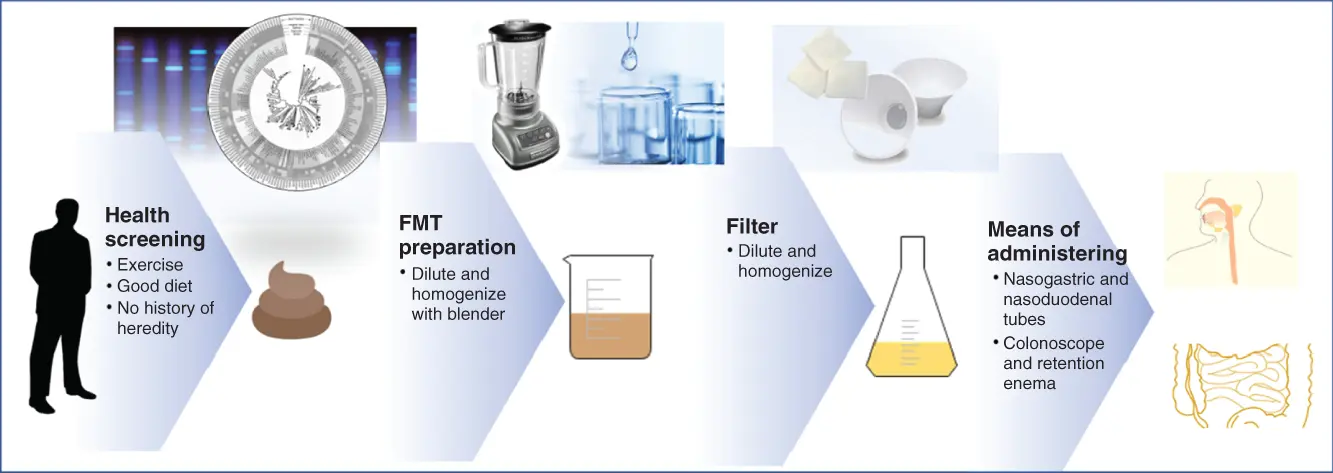
Figure 1.5 Protocol of FMT.Stool from healthy donors are screened and tested. The acceptable stool is homogenized and filtered to obtain stool slurry [165]. Fecal suspensions were given via oral capsules, through nasogastric and nasoduodenal tubes into the upper gastrointestinal tract (top), or through a colonoscope or a retention enema catheter into the colon (bottom).
Source: Based on Bakken [166].
CDI results from excessive use of antibiotics or gastrointestinal surgery, resulting in the loss of the local microbiota. Such local microbiota includes the loss of essential groups from the Lachnospiraceae and Enterobacteriaceae communities. These changes in the structure and functions of the resident microbiota reduce the resistance for intestinal pathogens, such as Clostridium difficile , to localize and propagate in the gut [169, 170]. While other pathogens can be treated with other antibiotic treatments, C. difficile can exist in three different lifestyles (planktonic, biofilm, and spore) that complicate the process of eliminating these pathogens from the gut. The ability of the microbe to evade antibiotic treatment by regulating its lifestyle often leads to recurrent CDI, where the intestinal microbiota fails to recover and thus establishing a new homeostatic balance within the host post‐initial insult. Left untreated, the pathogen can manifest in different forms including diarrhea, pseudomembranous colitis, toxic mega colon, and other symptoms, even rarely resulting in death [171, 172].
Tremendous amount of research links bacterial dysbiosis in both human and mice showed the depletion of Bacteroidetes and enrichment of Proteobacteria that are linked to a higher risk rate of acquiring CDI [173–176]. The use of FMT to treat CDI showed lower rates of recurrent CDI, leading to the recovery of the Bacteroidetes and Clostridium clusters IV and XIVa ( Firmicutes ) while showing depletion of the Proteobacteria populations [177, 178]. This is further proven by a study conducted on 317 patients showing 92% of patients showed complete recovery from CDI, out of which 89% exhibited full recovery after the first treatment. Only approximately 4% of patients experienced a relapse in symptoms after the FMT [177, 178]. It is mentioned from the studies above that FMT as adjunctive therapy to antibiotic treatment would be an avenue that merits further investigation.
Aside from typical colonoscopic lavage, there is increasing interest in oral delivery of encapsulated FMT. Compared to colonoscopy, oral FMT administration is considered non‐invasive, less resource intensive, easily administered, and more accessible to patients [179]. A meta‐analysis has identified that a single FMT capsule infusion has an average colonization efficiency of 80%, whereas multiple infusions showed 92% efficiency [180]. In a randomized clinical trial, orally administered FMT showed minimal difference compared to FMT lavage to prevent recurrent infection over 12 weeks [181]. Current studies are geared toward developing smart oral delivery methods to facilitate the targeted release of the microbes. Preliminary studies of FMT capsules with a targeted colonic release(FMTcr) showed better therapeutic effects compared to FMT capsules with the gastric release (FMTgr) [182].
1.3.1.2 Prebiotic‐, Diet‐, and Probiotic‐Mediated Prevention of Pathogenic Infections
As discussed in the earlier sub chapter 1.2, a perturbation in the gut ecosystem increases the risk of microbiome dysbiosis, significantly increasing the hosts' vulnerability to infection [163, 183]. Thus, other measures have been taken to re‐establish homeostatic balance and restore the host health. In the following, we will discuss the use of prebiotics, diet, and probiotic means of balancing the gut microbiome.
The use of prebiotic fibers has been proven to increase the localization of Firmicutes and Bacteroidetes . Studies using a non‐Westernized diet (balanced fat, sugar, and dietary fiber) found that the microbiota stability was maintained better than those with a Western diet when challenged with antibiotic treatment, preventing the proliferation and colonization of opportunistic pathogens [184]. In a separate study, mice fed with microbiota‐accessible carbohydrates (MAC) were shown to mitigate CDI through promoting the growth of MAC‐utilizing taxa, resulting in the production of beneficial metabolites such as SCFA [185].
Adjusting the dietary consumption of lipids was further found to encourage the growth of certain microbial groups by altering hepatic lipid and bile metabolism, thus indirectly changing the microbiome and their corresponding metabolites [163]. Fatty acids can alter pathogen virulence, survival, and growth; thus, clinical applications of fatty acid in infection treatment are carried out [186]. Scientists studying various dietary lipid sources influence the host's pathological response to Citrobacter rodentium infection, where olive oil showed one of the best chemoprotective properties [187].
1.3.2 Inflammatory Disease
In the event of microbiome dysbiosis, inflammation occurs resulting from the immune system attempting to remedy the situation [188]. There are increasing evidences suggesting the link of diet, microbiota imbalance, and the pathogenesis of the inflammatory disease. The nutritional composition may trigger inflammation through direct interactions with the mucosal tissues and indirect interactions by altering the microbiota composition [164, 189–192]. We will discuss IBD as a case study on the effect of diet on IBD pathogenesis.
Читать дальшеИнтервал:
Закладка:
Похожие книги на «Principles in Microbiome Engineering»
Представляем Вашему вниманию похожие книги на «Principles in Microbiome Engineering» списком для выбора. Мы отобрали схожую по названию и смыслу литературу в надежде предоставить читателям больше вариантов отыскать новые, интересные, ещё непрочитанные произведения.
Обсуждение, отзывы о книге «Principles in Microbiome Engineering» и просто собственные мнения читателей. Оставьте ваши комментарии, напишите, что Вы думаете о произведении, его смысле или главных героях. Укажите что конкретно понравилось, а что нет, и почему Вы так считаете.
